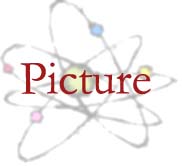|
J.J. Thomson |
 |
|
|
|
||
| "...we have in the cathode rays matter in a new state...this matter being the substance from which the chemical elements are built up." Time Period: 1856 - 1940 Background: Joseph John Thomson was an English physicist who revolutionized the knowledge of atomic structure by his discovery of the electron. He was Cavendish Professor of Experimental Physics at Cambridge and Honorary Professor of Physics at the Royal Institution at London. He won the Adams Nobel Prize for physics fro his work on early atomic structure. Belief: Thomson did careful research with cathode-ray tubes to study the properties of electrons. Using magnets at either side of the instrument, he connected both sides to a source of high voltage electricity, charging the electrode (magnet). The path of the cathode rays through the tube, therefore, bent because of the presence of a negatively-charged substance within the atoms. It led to the conclusion that atoms contained smaller particles, called electrons, negatively charged, as well as positively charged particles; they had to balance each other out. Contribution: J.J. Thomson's discovery was a huge step ahead on the understanding of atomic theory. The discovery of the electron and eventually the conclusion of neutrons served to be a spectacular leap in how the field of atomic theory stood then. The two main components of the atom was discovered in 1897, and gave way to a whole new world of opportunities.
|
||
|
Sources "J.J. Thomson." Famous Physicists and Astronomers. D. Paar. <http://www.phy.hr/~dpaar/fizicari/thomson.html> "J.J. Thomson - Biography." Nobel e-Museum. 2003 Nobel Foundation. <http://www.nobel.se/physics/laureates/1906/thomson-bio.html> |
||
|
|
|
|